Overview
This guide explains how to run a case on ProcessMaker Mobile using the process created in the How to Create Your First Process guide. Moreover, this guide will help you learn how to use ProcessMaker version 3.0 with ProcessMaker Mobile.
Process Description: This guide will use the same process created in the How to Create Your First Process guide, and add the Geomap and Signature mobile controls.
This process consists of a sequence of steps that happen when an employee of a company makes a request to purchase one or more items. After the employee submits the request, it goes to the inbox of the supervisor, who can approve or reject it. If the request is rejected, then it returns to the employee who first made the request. The employee can either modify the request and resubmit it to the Supervisor or abandon the request. If the Supervisor approves the purchase request, then it is sent to the Manager, who will purchase the requested items and finish the process.
Step 1: Creating the Process
Assuming that ProcessMaker is already installed on your computer (if not, follow this guide in order to install it), log in using an Administrator account. Then, follow the How to Create Your First Process guide and create the process "Purchase Request".
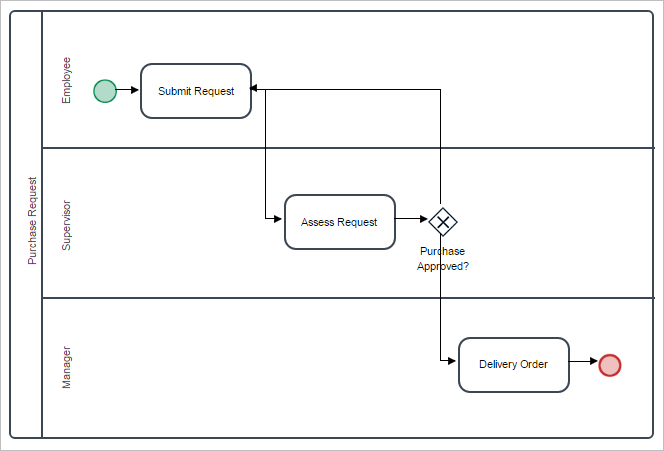
Step 2: Adding a File Control
Note: The file control is supported as of ProcessMaker Mobile version 1.0.8 on.
Create a new input document to store the content of the File control, go to the main toolbox on the process map, hover the pointer of the mouse over the + symbol next to Input Documents and click on Create.
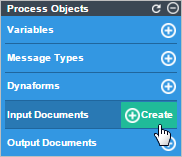
Create the input document with the following parameters and click on Save.
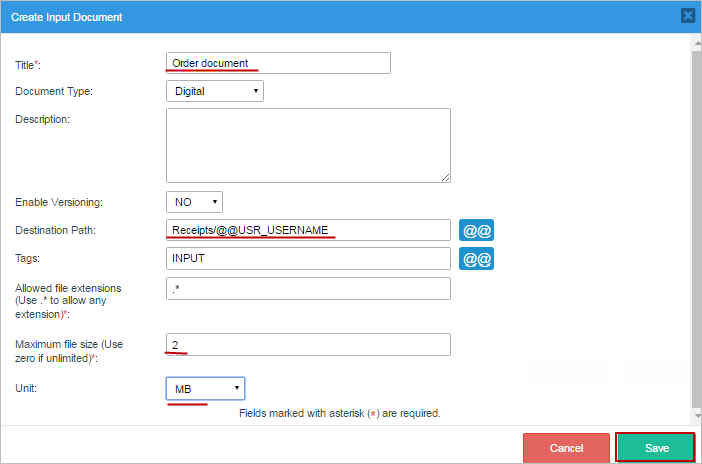
After creating the input document, add an additional control. Open the "Order Request" Dynaform, select Web Controls from the Dynaform Controls menu, and add the File control under the "Details" grid by dragging and dropping it onto the Dynaform Designer.
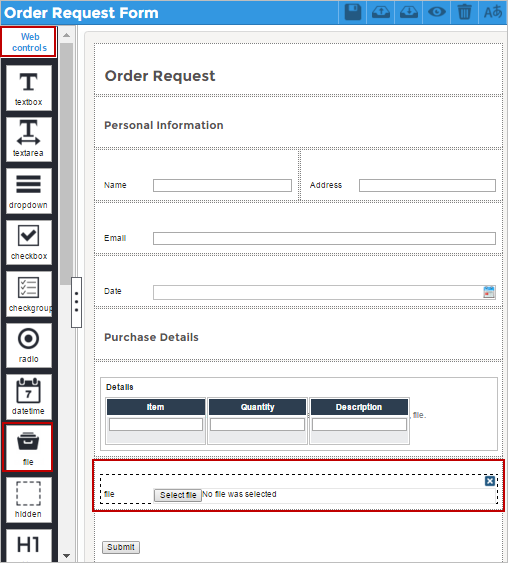
A window to select/create a variable will open. Select the Create Variable option, choose the "File" variable type in the Type dropdown menu. Click on the Settings link to display the File option. Then, click on the ... option to select an input document. A new window within the Create Variable window will appear. Select the "Order Document" input document by clicking on it. Finally, in the Create Variable window, click on the Save button to finish this configuration.
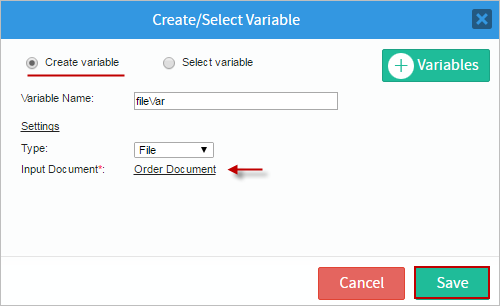
Step 3: Adding Mobile Controls
Let's add a couple of mobile controls to the "Order Request" form. Select Mobile Controls from the Dynaform Controls menu, and add the Geomap control and the Signature control under the File control. (When the Create/Select Variables window pops up after adding the Geomap control, just click on Save.)
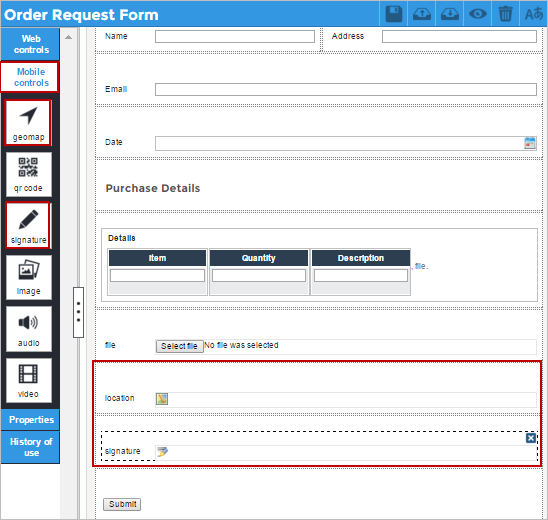
Add the same controls: File, Geomap and Signature to the "Request Approval Form" Dynaform that is reviewed by the next assigned user. Be sure to select the same variables chosen in the first Dynaform in the Variable property of the File and Geomap controls.
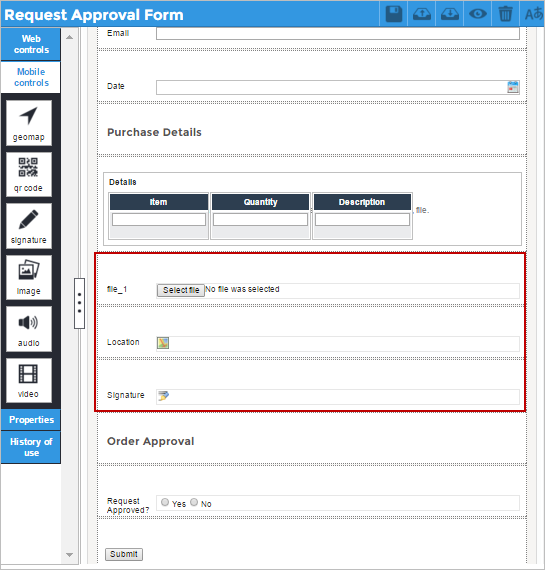
Step 4: Starting a New Case Using ProcessMaker Mobile
Assuming that ProcessMaker Mobile is already installed on your smartphone (if not, follow this guide to install it), access ProcessMaker Mobile and log in as one of the users assigned to the “Employees” group to start working with the "Purchase Request" process.
Then, in the Inbox section, tap on the plus (+) sign button located at the bottom of the screen to initiate a new case.
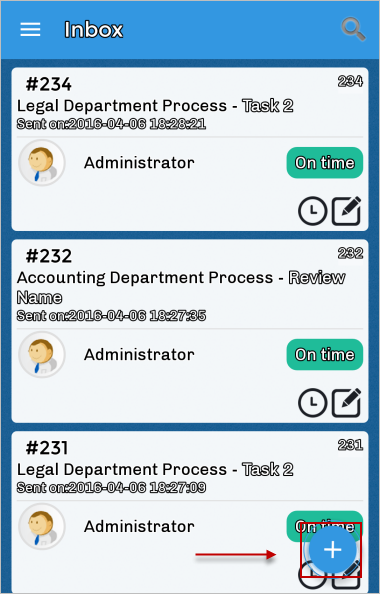
A list of available tasks assigned to the current user will be shown. Tap on the "Purchase Request" process that was created.
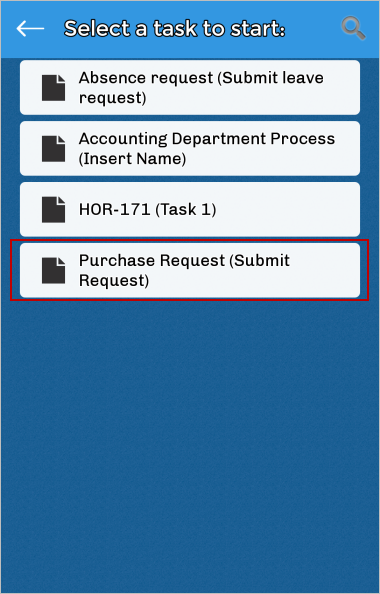
Available Version: As of ProcessMaker Mobile 1.0.8.
The mobile app allows users to search for a task in the task list. To search for a process, tap on the magnifying glass sign located at the top-right of the screen.
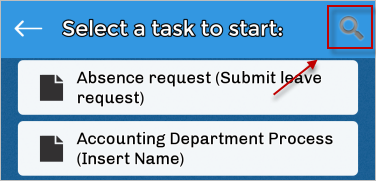
Type in the name of a process and the list of processes will be filtered based on the search input.
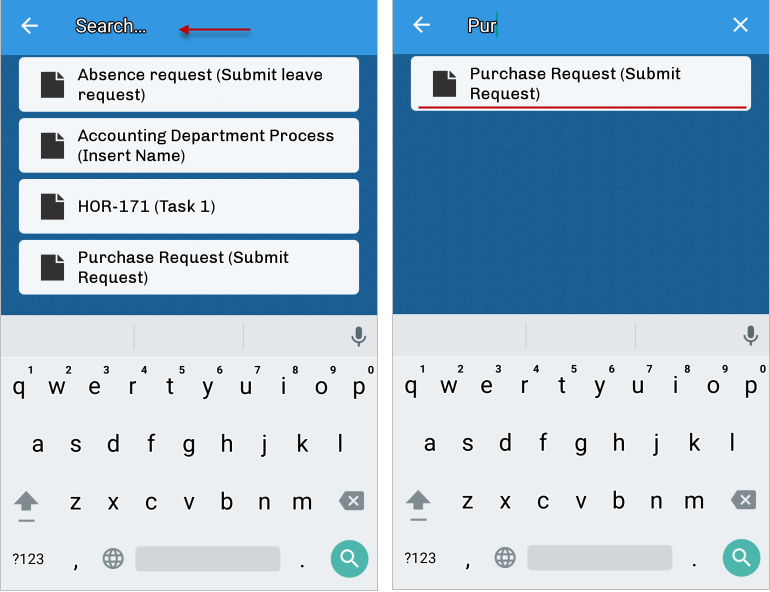
When the case is opened, the "Order Request" DynaForm created for the first task will be displayed. Each case is identified by a unique number shown in the header. Fill in the fields with the personal information.
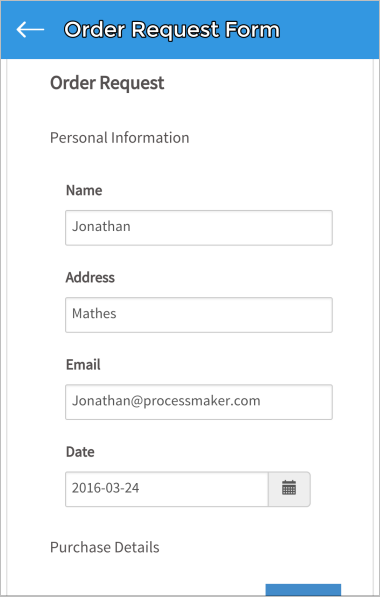
Add new items to the "Purchase Details" grid by tapping on the (+) Add button at the top-right corner of the grid.
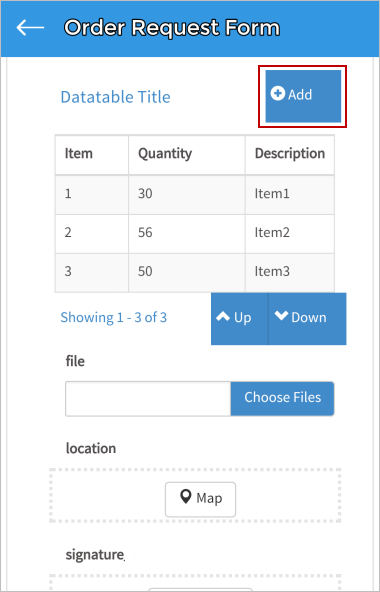
Fill the fields in the new screen and tap Save to add a new item to the grid.
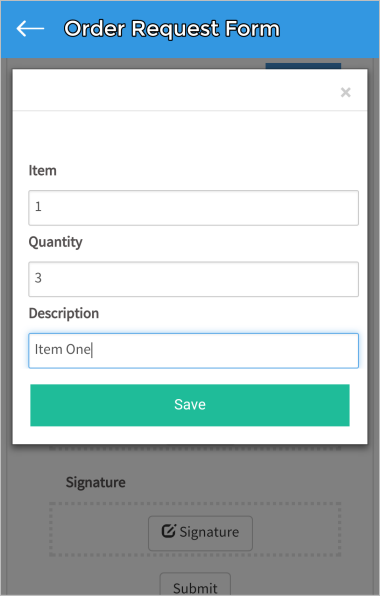
An item can be edited or deleted by tapping on its row. To cancel, tap on the cross sign (x) at the top-right of the new screen.
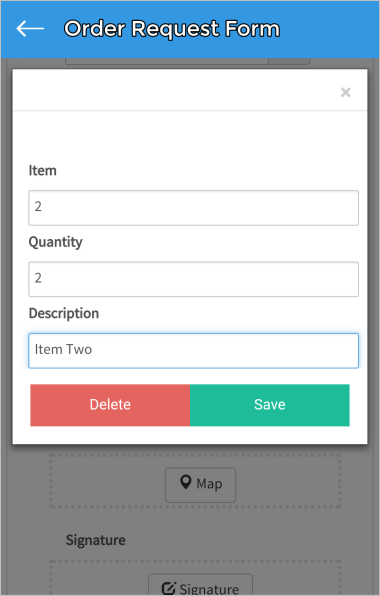
Tap on the Showing 1-10 link at the bottom of the grid to select another display preference. Navigate between groups of rows by tapping on the Up or Down button. If the grid contains several columns, swipe from right to left to check the rest of columns of the grid.
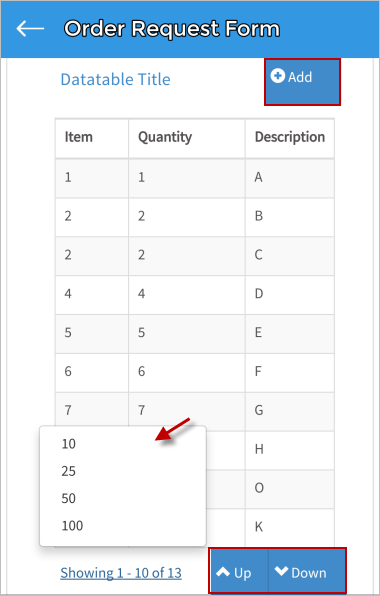
Add a file to the form by tapping on the Choose Files button next to the file field.
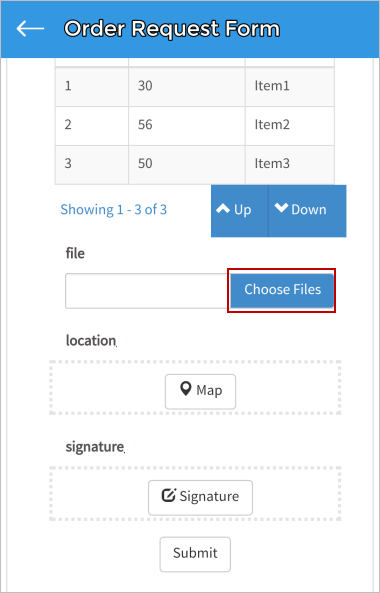
A new screen will open allowing the user to navigate through the files on their device. Each different type of file has a different icon to help the user navigate between files.Select a file, and tap on the paperplane sign in the top-right corner.
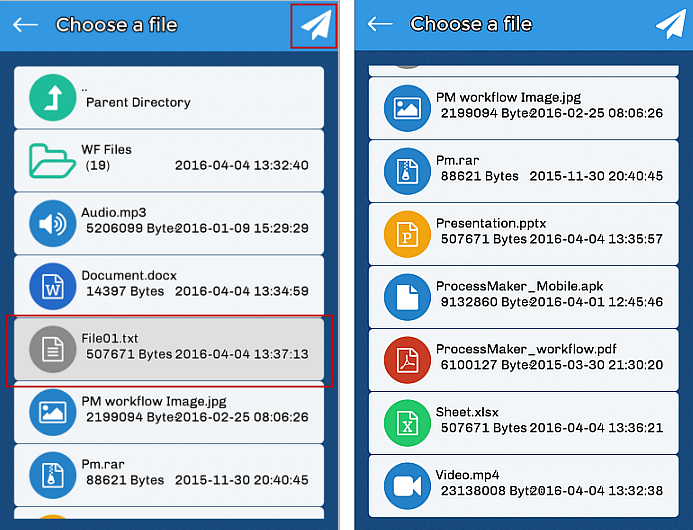
The selected file will start to be uploaded.
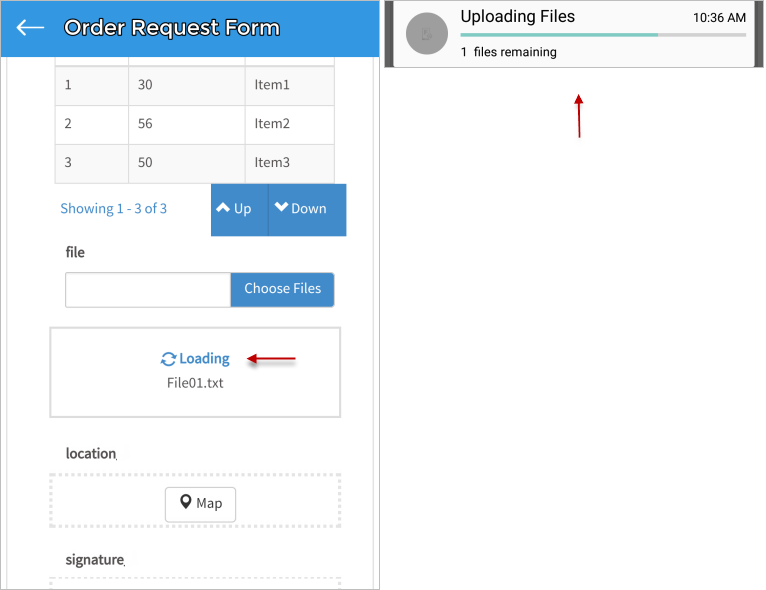
The user can select another file by tapping on the Choose Files button again. The file selected will replace the one selected before. Once ready, the file will be listed in the form.
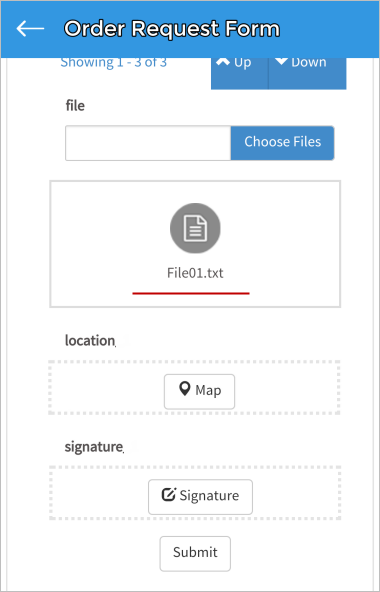
Note: The file management is different in the iOS system mobile. To learn more about this behavior, see Files in iOS.
Tap on the "Location" field to open the Geomap control, then tap on the target icon to get your current location (the Location Service on your device must be enabled), or slide the screen to select the location by yourself. Once ready, press the check icon on the top-left of the screen.
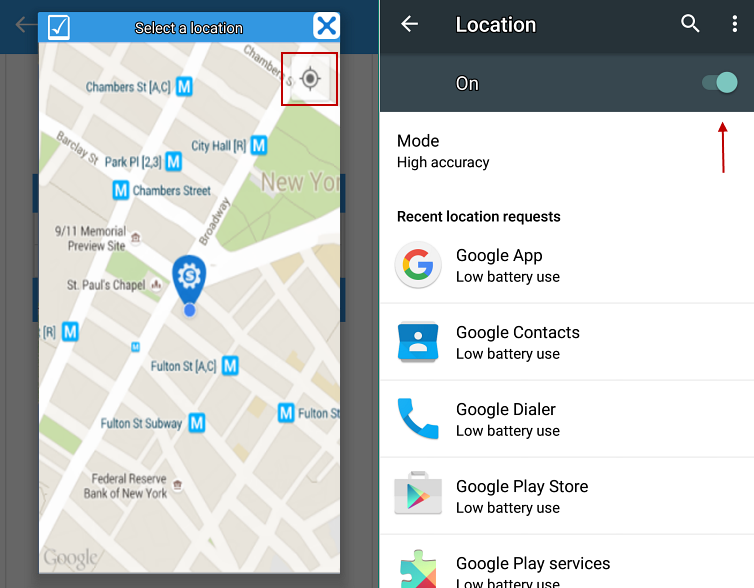
Tap on the "Signature" field to open a blank screen to draw a signature. Tap on the Clear button to clear the screen and start all over. Once ready, tap on the Save button.
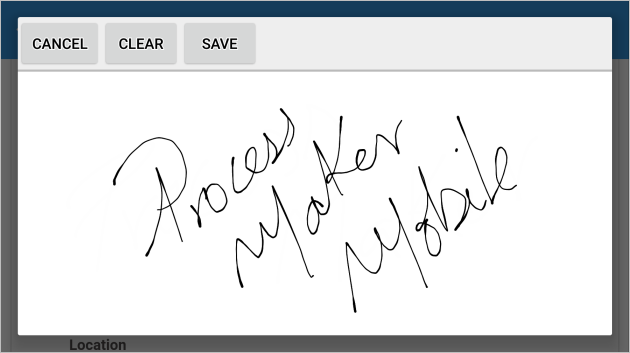
After filling out the "Order Request" form, tap on its Submit button to save the information to the ProcessMaker server.
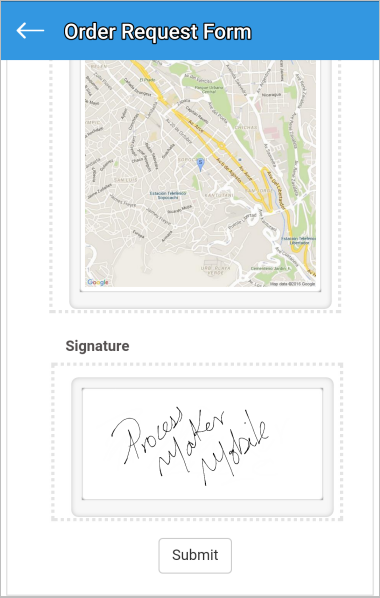
The next task in the process is assigned to one of the users in the Supervisor group, in this example "John Doe".
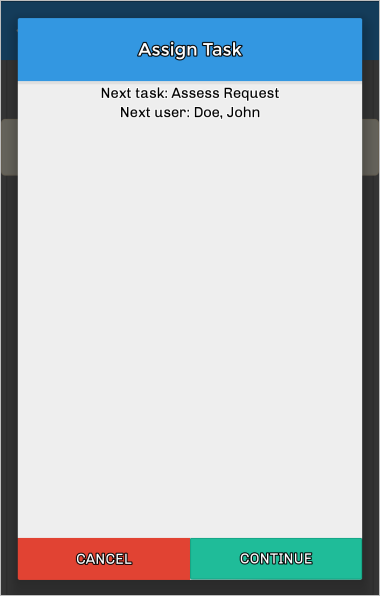
Step 5: Reviewing a Case Using ProcessMaker Mobile
Log out of ProcessMaker and log in as the next user who is assigned to the case, which in this example is "John Doe".
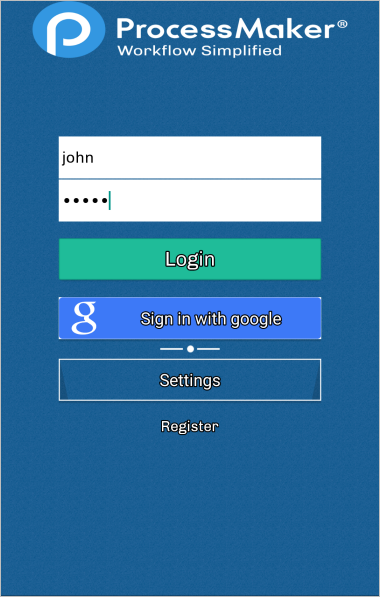
The case #149 sent by "Jonathan" will be listed in John Doe's inbox, which can be seen by going to Inbox.
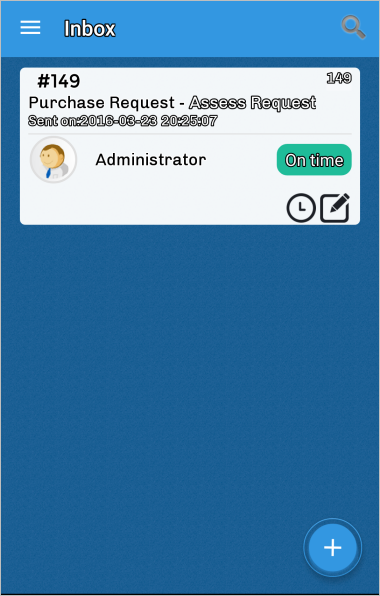
Tap to open the case and view the information sent (which can not be modified).
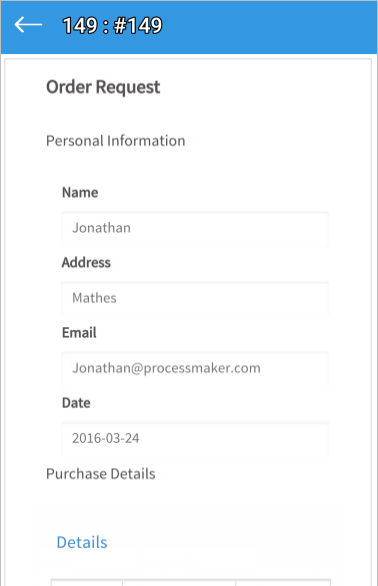
John Doe, who is a member of the Supervisor group, has the ability to either approve or reject the request sent by the user by selecting “Yes” or “No” in the "Approved" radio button option. In this example, the supervisor will approve the request and submit the form.
Remember that after this task, an exclusive gateway evaluates whether the request was approved or not. Since it was approved, it is now assigned to a user in the Managers group named "Daniela".
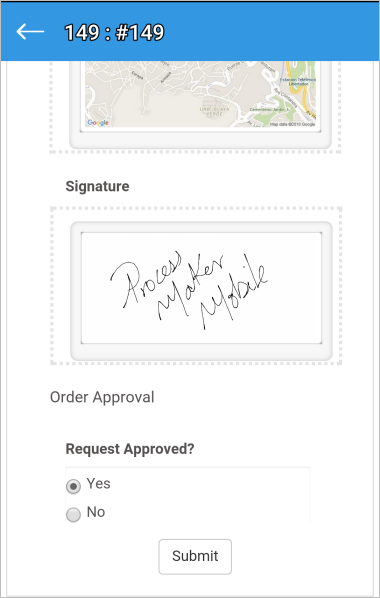
Tap on Continue to send the case to "Daniela". Then, log out and log in again to ProcessMaker as the user "Daniela."
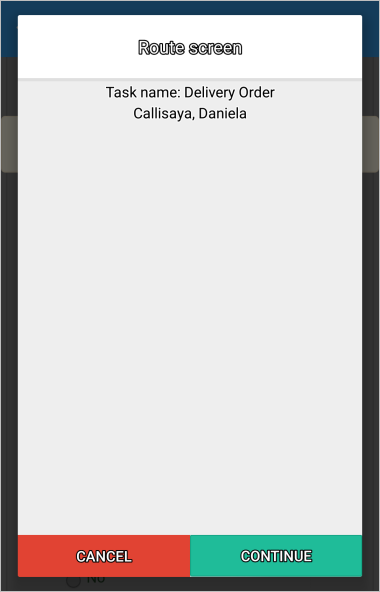
The case #149 sent by "John Doe" is shown in Daniela's inbox.
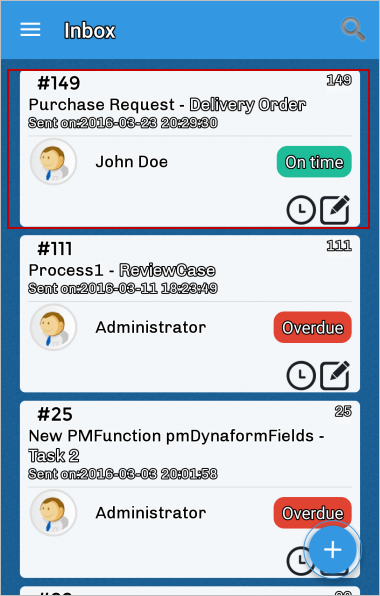
The information shown on this Dynaform is the same shown on the Dynaform sent by the first employee, except that the option "Deliver Order?" is at the bottom of this Dynaform, where the Manager will decide whether or not to deliver the request. In this case, the Manager will deliver the order by selecting the "Yes" radio button under the "Deliver Order" option and submitting the form.
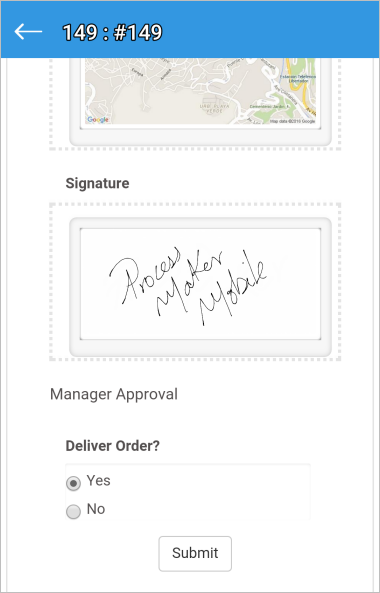
Since this is the last task of the process, the message "End of process” will be displayed, along with the name of the last employee assigned to the case.
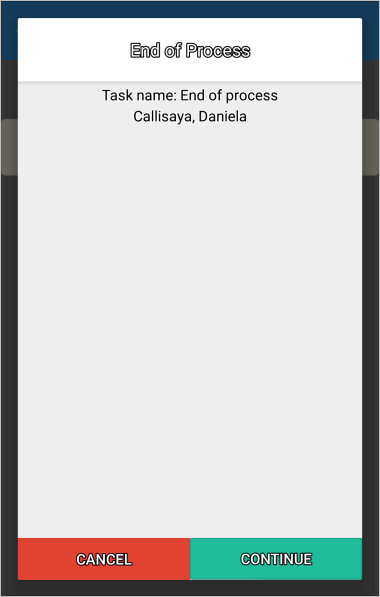
Tap on Finish to end the case and terminate the process.
This is just a very simple example of how to work with a process in ProcessMaker version 3.0 with ProcessMaker Mobile. Real processes are more complex and often require more analysis and development. To learn more about designing processes, review the rest of the documentation and try doing more examples to improve your knowledge of ProcessMaker.



